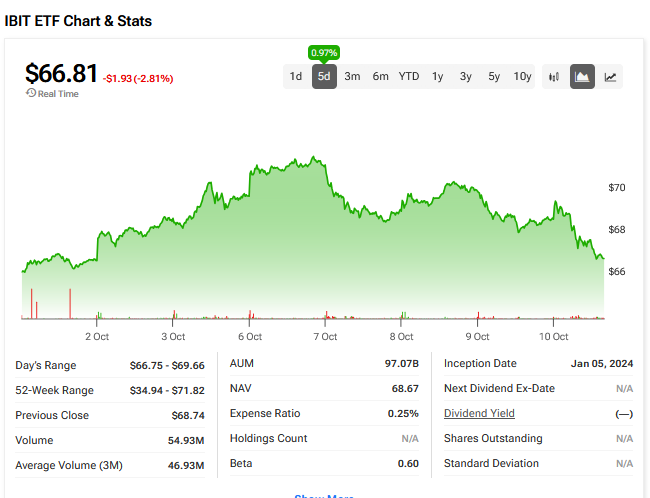Market Pulse
In a crypto landscape frequently dominated by price fluctuations and macroeconomic anxieties, a less visible but critically important metric has been quietly signaling Bitcoin’s underlying strength: the Bitcoin Miner Health Index. Recent data shows this index has climbed to a robust 59%, a figure many analysts interpret as a significant bullish indicator for the world’s leading cryptocurrency. This uptick suggests that despite recent market volatility and bearish sentiment fueled by external factors, the foundational participants of the Bitcoin network — its miners — maintain strong conviction and operational health, laying a crucial groundwork for future stability and potential growth.
Understanding the Bitcoin Miner Health Index
The Bitcoin Miner Health Index is a composite metric designed to gauge the overall well-being and outlook of the Bitcoin mining ecosystem. It consolidates several key on-chain and off-chain data points related to mining activity, providing a holistic view of whether miners are expanding operations, holding their BTC rewards, or facing distress. Unlike simple price charts, this index dives into the fundamental economics and operational stability of the network’s most critical infrastructure providers.
- Hash Rate Stability: A consistently high and growing hash rate signifies a robust, secure network, indicating miners are investing in and maintaining their operations.
- Miner Profitability & Efficiency: This considers factors like transaction fees, block rewards, and energy costs, showing how economically viable mining remains.
- Accumulation vs. Distribution: The index often tracks miner wallet movements, identifying if miners are selling their Bitcoin to cover costs (distribution) or holding onto it (accumulation), signaling their long-term price expectations.
The Significance of a 59% Reading
A reading of 59% on the Bitcoin Miner Health Index is generally considered to be in the ‘healthy’ to ‘robust’ range. This level suggests that miners are not only profitable but are also demonstrating a strong propensity to accumulate or hold their Bitcoin, rather than immediately selling it off. Such behavior often reflects a collective belief in Bitcoin’s future price appreciation, indicating that miners view current prices as attractive for holding rather than offloading.
Historically, periods of elevated miner health have often preceded or coincided with bullish market cycles, as sustained miner confidence translates into network security and reduced selling pressure. The current 59% reading, especially following recent market downturns, provides a compelling counter-narrative to short-term fears, pointing to fundamental strength that could buffer against external shocks and foster a recovery.
Miners as Bellwethers for Bitcoin’s Future
Miners are unique participants in the Bitcoin ecosystem. Their operations require significant capital investment in hardware, infrastructure, and energy, making them long-term stakeholders by necessity. Their operational decisions – whether to expand, maintain, or reduce their hash power – are deeply tied to their long-term outlook on Bitcoin’s value and network security. Consequently, their collective ‘health’ serves as a profound barometer for Bitcoin’s fundamental value proposition, distinct from speculative trading sentiment.
When the Miner Health Index shows strength, it suggests:
- Long-Term Conviction: Miners are investing for the long haul, indicating they believe in Bitcoin’s sustained profitability and adoption.
- Network Security: A healthy mining sector ensures the network remains highly decentralized and secure, reducing vulnerability to attacks.
- Reduced Selling Pressure: Accumulating miners contribute less to market sell-offs, potentially stabilizing prices.
Challenges and Forward Outlook
While the 59% index reading is highly encouraging, the mining sector is not immune to challenges. Fluctuating energy prices, evolving regulatory landscapes, and the increasing difficulty of mining remain constant pressures. However, the current health index suggests that miners are adapting and finding efficiencies, maintaining profitability even in dynamic environments. This resilience underscores Bitcoin’s robust design and the inherent long-term vision held by its foundational participants.
Conclusion
The Bitcoin Miner Health Index’s rise to 59% provides a vital lens through which to view Bitcoin’s current state. Amidst global economic uncertainties and sporadic market downturns, this metric offers a reassuring signal of underlying strength and long-term conviction from the network’s most integral players. It suggests that while external factors may cause short-term price volatility, Bitcoin’s fundamental infrastructure remains robust, positioning the asset for potential resilience and growth in the months ahead.
Pros (Bullish Points)
- Indicates strong underlying network fundamentals and security for Bitcoin.
- Suggests long-term conviction and reduced selling pressure from key network participants (miners).
- Historically, a healthy Miner Health Index can act as a leading indicator for market resilience or recovery.
Cons (Bearish Points)
- External macroeconomic factors, such as inflation or interest rate changes, could still override this internal signal.
- The index is one metric among many; it doesn't guarantee immediate price appreciation or immunity from all market risks.
Frequently Asked Questions
What is the Bitcoin Miner Health Index?
The Bitcoin Miner Health Index is a composite metric that assesses the overall well-being and operational outlook of the Bitcoin mining ecosystem by analyzing factors like hash rate, profitability, and miner accumulation/distribution.
Why is a 59% reading considered bullish?
A 59% reading is considered robust, indicating that miners are profitable and actively holding (accumulating) their Bitcoin rewards, suggesting strong belief in future price appreciation and foundational network strength.
How do miner activities influence Bitcoin's price?
Miners, as long-term stakeholders, influence price by ensuring network security through their hash rate and by their holding or selling behavior. When healthy, their accumulation reduces selling pressure and signals long-term confidence in BTC's value.



